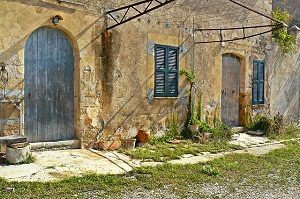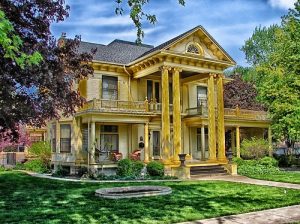5 Simple Keys to Choosing the Right Investment Property
 I heard from an investor this morning who shared with me the greatest challenge she is currently facing in buying a property, something she calls “analysis paralysis.”
I heard from an investor this morning who shared with me the greatest challenge she is currently facing in buying a property, something she calls “analysis paralysis.”
She’s trying to figure out what property to buy, but because of all the disjointed information she’s gathering through her research, she’s feeling overwhelmed and unable to take action.
For those who lack a clear vision, a strategy and a systematic, step-by-step plan for researching and assessing properties, this feeling is all too familiar.
For most investors, their first property was not their most profitable or successful deal. But it was the one that got them in the game and helped them build momentum.
Because she has a long-term perspective and is planning to hold her next property for at least 10 years, her best bet is not to worry about trying to make the perfect choice. She should instead focus on buying a good property that ticks some key boxes that will likely lead her to profits down the road.
If you’re planning to hold long-term property, here are five simple keys to choosing the right investment property for your next big step:
1. Buy Something Old And Ugly
 Let me start by asking you two question to test your basic property investing knowledge:
Let me start by asking you two question to test your basic property investing knowledge:
What is the most valuable component of a property, the house or the land?
Which property will be worth more in 15 years: the ugly house on a larger block, or the brand new beautiful home next door on a smaller block?
If you said one, the land and two, the ugly house on the larger block, give yourself a pat on the back. You’ve just nailed the reason why it’s smart to buy old and ugly.
As long as the property is structurally sound and rentable, old and ugly homes represent the best value in the market, because there’s less depreciation, meaning loss of value, over the next decade or so.
Not only that, but the average homebuyer lacks vision for what a property could be. They think emotionally and want to buy something that appeals to their senses upon their first visit. Old and ugly homes, therefore, tend to get passed up, especially in a buyers market. Lower buyer demand could mean a better deal for you. You might be able to pick up a property for well below the area’s median house prices.
When buying for a long term hold, smart investors have a vision of the value they can add to the home later. Your old and ugly house will be ripe for a renovation at just about the time you’re ready to sell. This will enable you to maximise your future profits on the property.
2. Buy Something On A Larger Block
 When it comes to your long term buy and hold property purchases, the more land you can get, the better. As I mentioned before, the land is where the greater future value lies.
When it comes to your long term buy and hold property purchases, the more land you can get, the better. As I mentioned before, the land is where the greater future value lies.
When you buy and hold, you’re banking on the fact that land in your area will become more and more scarce, driving the value up.
Just as you need a clear vision for future renovations, why not also buy a property that you could subdivide and develop in years to come? While today, the market might demand 800 square meter blocks, the market in 10 years may be quite happy with 400 square meter blocks.
Renovations and subdivisions tend to sound quite daunting to first-time property investors. The thought may scare you now, but it shouldn’t be the case in the future. If you gradually improve your skills while gaining new experience, in a decade you’ll be thankful to already own a property that you can improve.
3. Buy As Many Bedrooms As Possible
 Homes are marketed by agents based on the number of bedrooms they have. Properties with more bedrooms are generally worth more.
Homes are marketed by agents based on the number of bedrooms they have. Properties with more bedrooms are generally worth more.
Assuming the land size is the same, the properties are in the same area and the homes in similar condition, a four-bedroom home will always be more expensive to buy than a three-bedroom home.
Here is another area where you can have some future vision for your value-add potential. I’m working with one investor who is planning to purchase a three-bedroom home, but only if she can convert a large laundry room into a fourth bedroom. Assuming her builder can make it happen, she reckons she can add $70,000 in value through this simple conversion.
Why not buy a property today that has similar potential down the road? Formal dining room and second living room conversions are also a favorite of renovators.
4. Buy A House Rather Than A Unit
 Units tend to offer little value add opportunities. They generally come with less land, because someone else has already subdivided the block.
Units tend to offer little value add opportunities. They generally come with less land, because someone else has already subdivided the block.
There’s often also body corporate strings attached, which means you may be restricted in the improvements you can make in the future.
Depending on the area, houses can also be easier to sell than units. The broader market will usually always demand houses before units. If the market is flat when you need to sell, you’ll be glad to have a house with a little land on a traditional title.
5. Buy In The Middle Of The Market
Buy a property that appeals to the median income earner. When you’re starting out, you don’t want to hold a property where only those with the lowest socioeconomically can afford to buy, or in the highest-end suburbs where the wealthiest people live.
 The middle of the market is larger, and therefore the safest place to begin.
The middle of the market is larger, and therefore the safest place to begin.
Just before the Global Financial Collapse (GFC) of 2008, I purchased some cheap land and built a three-bedroom home in a regional Victorian town. My plan was to sell it for a quick profit.
My friend owned some waterfront land in the same town and was building some high-end units there. He was destined to make a lot more money than I was – until the bottom fell out of the market.
We both felt some pain, but his was much worse than mine. By the end of the year, his units were worth approximately $300,000 less than what he had planned to sell them for originally. While it took me 12 months longer than I planned to sell my property, I received within $2,000 of my original asking price, breaking even on the deal.
The middle of the market is where you want to be, especially when the market turns against you.
Conclusion
 While we’ve only scratched the surface of what to consider when researching and assessing properties, if you keep these five basics in mind, you’ll likely make much better than the average investing decisions.
While we’ve only scratched the surface of what to consider when researching and assessing properties, if you keep these five basics in mind, you’ll likely make much better than the average investing decisions.
If you’re hungry for more, check out Steve McKnight’s Property Apprenticeship course. Steve has created two complete sessions on researching and assessing properties. The topics include:
Identifying target properties Determining a property’s suitability Gathering the most relevant information for your due diligence Decreasing the risk of financial loss Defining your target market Key considerations for forming an ultimate opinion A property assessment template to systematically rate every property
There’s even a few sessions on how to conduct property inspections like a pro, complete with a systematic process and thorough templates. You can learn more about Steve’s course here.
Comments
Trackbacks
[…] Artificially low interest rates do bring distortions to the market (if you’ve ever wondered how the RBA weaves their magic here is a good summary). And I can’t help but think it has provided a boon for Lend Lease on the weekend. Their Darling Square project in Sydney sold out 581 apartments (for $600 million dollars) in less than 5 hours. It was certainly a popular choice! But I just wonder how worthwhile purchasing in such a project will be. It’s hard for me to see how returns and growth are best found there when competing against 1499 similar apartments in the same location. So, as always, we need to take stock of where and what we buy as an investment. […]
Got something to say? Post a comment...
You must be logged in to post a comment.





Also perhaps add:
Seek a “First Touch: property. A first touch property is a term that I like to use when describing an off market transaction. On market transactions are “multi touch.”
Each person that comes into contact with a property and the vendor needs to somehow get paid for their time. Nobody works for free. From the real estate agent to the developer and all concerned parties in between.
The cost of their time is factored into the real cost of the property or the price you pay.
A “First Touch” property is a situation where you can deal directly with a vendor one on one.
At first touch you can find a way to negotiate a purchase without all the noise of other interested parties.
First touch properties will end up being the jewels in a portfolio in terms of both value and cash flow.
The further away you are from the source of the deal/vendor the further away you are from true value at purchase.
Great thoughts @Don. Very true.
Good pointers on how to choose and where to do the property investment.. Great Read!
We are practically promoting steves course on each blog article.
It’s a great course :)